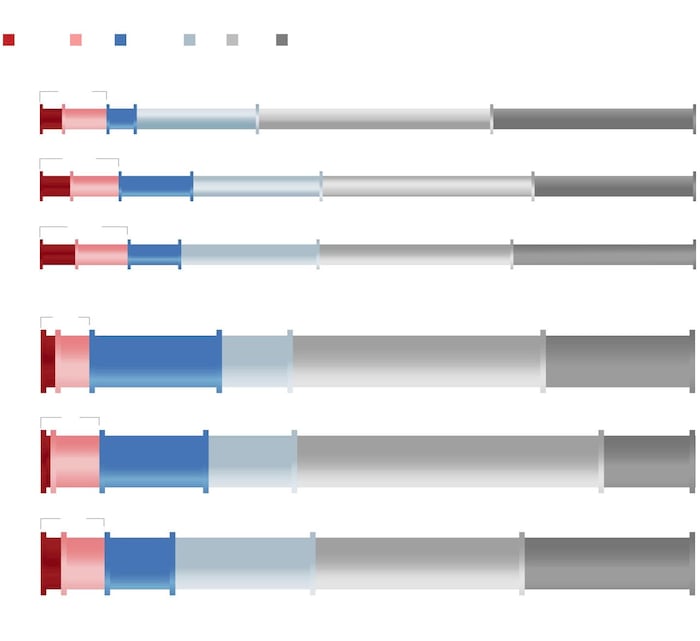Canada News
Is another pipe failure looming? A health check of Canada’s water mains
By Graeme Bruce, CBC News, RCI

Survey data from 2020 shows that 9.8 per cent of Canada’s transmission pipes — like those in Calgary and Montreal — are deemed to be in poor or very poor condition. (CBC illustration) Photo: (CBC illustration)
Survey data shows how much of our infrastructure needs repair — but it also reveals how much we don’t know
About one in every five kilometres of large water mains in Canada is in poor or entirely unknown condition, according to survey data — an unsettling figure following a summer of high-profile infrastructure failures.
A massive main break in Montreal in mid-August (new window) triggered boil-water advisories and significant urban flooding. Calgary declared a local state of emergency following a catastrophic water main failure in June. Months later, the city is again asking its citizens (new window) to curb water usage as the massive job to fix the break continues.
Could another catastrophic failure be looming underground?
Survey data from 2020 (new window) shows that 9.8 per cent of Canada’s transmission pipes — like those in Calgary and Montreal — are deemed to be in poor or very poor condition, meaning they are barely serviceable, likely to fail and/or present a public safety risk. This number has crept up since 2016, when 7.5 per cent of large water pipes were in this condition.
The proportion of small water pipes in poor or very poor condition rose from 10.1 per cent in 2016 to 13.4 per cent in 2020.
The survey data, collected by Statistics Canada, is part of a broader look at public infrastructure, and is based on responses from government organizations across Canada.

Physical condition of Canada’s water pipes.
Photo: Statistics Canada (CBC)
Muntasir Billah, an associate civil engineering professor at the University of Calgary, pointed to climate change as one factor putting more pressure on our water delivery systems.
We have been observing rapid change from frigid, cold winter, to [a] short span of warm weather that puts pressure on pipes through freezing and thawing,
Billah told CBC News.
The data also suggests we simply don’t know anything about the physical condition of another 10 per cent of our large water mains — a significant blind spot, Billah said.
Accurate pipe performance metrics and service life estimates are critical to the effective management of underground infrastructure,
he said. More investments are required.
Even for pipes for which condition is reported, their actual condition is likely unknown, according to Rebecca Dziedzic, assistant civil engineering professor at Concordia University.
Some of the infrastructure might have never been inspected, and condition is estimated simply based on age,
she said.
Focusing on some of Canada’s largest cities paints a more troubling picture of deteriorating water pipes, at least for some. In Ottawa, 22 per cent of transmission pipes are in poor or very poor condition, as are 17 per cent of those in Vancouver and 11 per cent in Winnipeg.

Physical condition of Canada’s water pipes.
Photo: Statistics Canada (CBC)
However, the data isn’t a perfect predictor of what’s to come. The massive water main that failed in Calgary was both halfway through its life expectancy and in good condition,
the city’s mayor told media in June (new window). What caused the failure is still under investigation.
It’s clear that water infrastructure in Canada is getting older. Separate data compiled by the government shows that the average remaining useful life (new window) of infrastructure related to water is dwindling. Life expectancy varies, but the failed feeder in Calgary was nearly 50 years into a 100-year lifespan (new window).
However, it’s not at its most dire in the 40-plus years of data. In the early 2000s, the nation’s water network was at its oldest. The average remaining useful life was 53.7 years in 2002; today, it’s 59.2 and trending down.
In the early 2000s, many pipes made of asbestos cement and cast iron could have been replaced with more modern, longer-lasting materials such as ductile iron and PVC, Billah noted, boosting the overall useful life of Canada’s water infrastructure.
Since we don’t know the condition of so many of our water pipes, it’s hard to pin down an accurate evaluation of how much money is needed. Estimates vary, but Statistics Canada data shows the replacement value of those poor or very poor municipal potable water pipes to be north of $26 billion (new window). That number would likely rise considerably if the condition of more pipes was known.
But replacement is not the only option, Billah noted: Authorities should implement proactive early rehabilitations, identify maintenance and operations adjustment to halt and decrease surprise break events before those can be replaced.
These major service failures come as cities are increasingly feeling financial pressures while trying to address crumbling infrastructure.
Municipalities own approximately 60 per cent of the infrastructure in this country and yet when it comes to taxes, we get less. Eight to 10 cents of every tax dollar that’s collected goes to municipalities,
Geoff Stewart, president of the FCM, told CBC News (new window) earlier in August.
Additional design by Wendy Martinez
This article is republished from RCI.





















